To keep your radio station top of mind with your audience, a solid brand tomorrow is just as important as high ratings today, Jon Coleman says in an interview with us.
Successful radio brands have engaging radio personalities to establish a great audience loyalty and a strong brand connection. As people have a short attention spans due to busy personal lives and many available media, we should ‘deliver’ each & every time listeners tune in. “PPM really dinged deejays that are talking in between records without saying anything”.
“The economic model of digital radio doesn’t work for the old economic model of terrestrial radio”
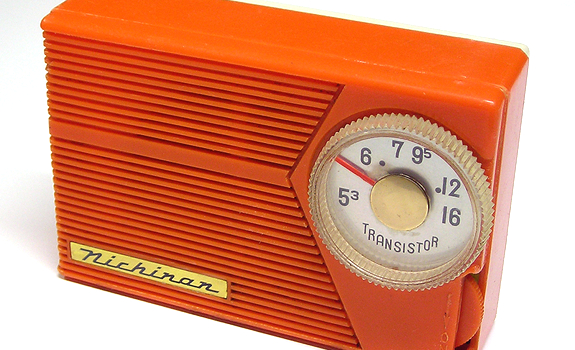
Traditional radio broadcasters should be present on digital media platforms (photo: Flickr / Roadsidepictures)
Start your own business
After getting a master degree in Communications, Coleman (photo below) worked for KNBR San Francisco (which has a long history) and consultancy company Frank N. Magid Associates. After a few years, he and two colleagues left to form an independent company, but when his associates gravitated towards TV, Jon founded Coleman Research (now Coleman Insights) to focus on radio. During over 3 decades of radio history, he witnessed the AM-to-FM shift, radio homogenization, and digital emergence.
 Meet your audience everywhere
Meet your audience everywhere
What kind of challenges and opportunities do you see for radio in this era?
“The younger consumer is becoming less dependent on any single means of entertainment, particularly as it relates to music. How to understand the role of radio, and what it can do to create and exploit digital opportunities, and, at the same time, protect and strengthen its base of people who consume it via the broadcast tower?”
Build your digital presence
According to Jon Coleman, the biggest problem for radio in the US right now is that “the economic model of digital radio doesn’t work for the old economic model of terrestrial radio”, even if monetization in a digital world could be even a challenge for digital platforms like Pandora and Spotify. While some operators seem to ignore digital, iHeart Media (formerly Clear Channel) seems to embrace digital as the future of radio. His own company works on both sides, helping both radio broadcasters and digital companies to manage consumer perceptions, expectations & behavior.
“The things that consumers want are going to slowly merge”
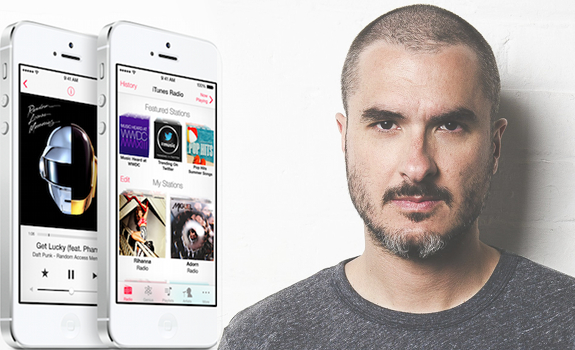
Could music curator Zane Lowe become the first ‘on-air’ personality on iTunes Radio? (image: Apple, photo: BBC)
Nurture your brand ambassadors
Which major trends do you see in how consumers are perceiving and using radio?
“The evolution of listener expectations for terrestrial radio is that radio offers not just music, but also local programming and entertainment value in between. Some of our customers have a corporate mandate that says: we need have to have personalities on all of our stations. What’s going to differentiate us and make us sticky, is the personality element.” But not only the perception of traditional radio has changed: “When a new product comes along, consumers kind of let down their radar, and see it as a new opportunity. As time passes, they begin to evaluate it. Things like commercialization and music repetition on Internet radio are starting to get picked on, and some of the glitter of the new package is starting to wear off. So the growth of digital media is not as fast as it used to be, but it’s continuing.”
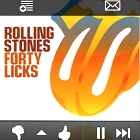 Implement your digital lessons
Implement your digital lessons
“The things that consumers want are going to slowly merge”, Coleman says. “Music streaming services are going to get into some areas that are sticky for broadcast radio, and terrestrial radio is going to be defending music. Digital consumers want more than just music, and you see traditional radio building more and more strengths in personality. If that works for terrestrial in holding their audience, then some of the digital companies will go after it.”
Help your talent grow
Do you still see a lot of terrestrial stations investing in localness and personality? What I hear from the States, is that especially within big companies, there’s a lot of syndication and voicetracking due to budget cuts, and a lot of on-air talents are being shown the door.
“In the mid-2000s and definitely post-2008, as companies cut expenses, they made mistakes in throwing out the baby with the bathwater, in other words: ‘I don’t need to have an evening or overnight live deejay, if that person isn’t as good as one that I can voicetrack’. We’re now beginning to see an interest in help to develop true personality. So it’s starting to swing back, and really in terms of morning and afternoon personality, because that’s where companies make their money.”
“The big brands are the ones that are winning”
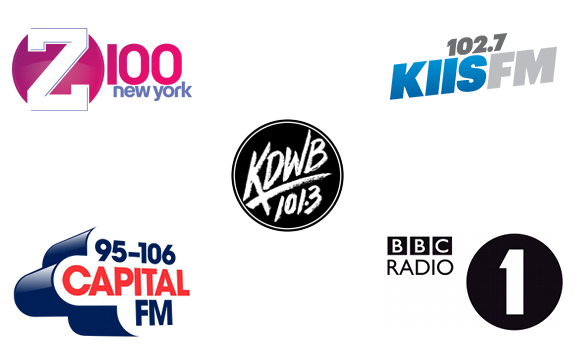
Top-of-mind radio stations have a huge advantage on digital platforms (logos: iHeart Media, Global Radio, BBC)
Optimize your running orders
Talking about dayparts & timeslots: seems like in PPM markets, it’s not only about the morning show anymore, but the whole product needs to be great at any given time. Do you see evidence of that?
“Yeah, that’s absolutely true”, John Coleman confirms, mentioning a couple of factors that have led to this: “Portable People Meter revealed that radio stations that are not programmed well – even if they have big perceptions, like when they are well-known and popular – get dinged in the ratings if they don’t deliver the right music in the right sequence, play the right commercial load in the right running order, or because their jocks are talking too much.” PPM also revealed that there’s more audience in middays and afternoons than diaries or recall methods had recognized:
[audio:http://www.radioiloveit.com/wp-content/uploads/jon-coleman-coleman-insights-interview-01.mp3|titles=Jon Coleman about the difference between (recall) diary and (real-time) PPM]
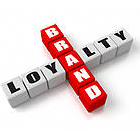 Charge your brand well
Charge your brand well
Most radio stations have now – a few years post-PPM – optimized their music scheduling, commercial breaks, talk segments and program flow. The playing field has leveled: “It has come back to: how compelling and well-known is your radio brand? Are you uniquely and strongly perceived in your market? The game plan is a bit different now, due to electronic measurement, but the big brands are the ones that are winning.”
Make your content valuable
Especially for program directors in other markets, could you share some other lessons you have learned from PPM? Let’s start with programming; what are the ‘laws’?
“Almost any interruption has a downside to it. A deejay cracking a mic in between records and just saying the call letters, is a signal to the audience to switch stations. PPM really dinged deejays that are talking in between records without saying anything. You better have a higher purpose when you break away from the music, like really being a personality; not just announcing a record or doing a sales promo.” Coleman also sees another important lesson, which is a function of both PPM and of something bigger.
“You’d better have a brand, or you won’t even be on the dial”

Digital devices, like this car radio, usually have just a few available positions for radio services (photo: The Gadgeteer)
Expose your power songs
More choice of media means that people are using almost every medium for a shorter amount of time and/or in shorter increments. Radio is one of them: “People’s Time Spent Listening is less; their tolerance for weaker music is less. You have to catch them when they come in. If they’re only listening in 10-minute occasions, you can’t be playing a low-level song at any time; you’ve got to basically play your powers all the time.” That’s why the average music playlist is shorter (and the average song rotation higher) than before. “It used to be that 75 spins a week was decent for stations in the US; now they’re up to much higher counts.” He stresses that while mechanical things like these do have an impact, a key lesson from (radio’s initial overreaction to) PPM is that what makes a station might be more based on gut feeling.
 Keep your content engaging
Keep your content engaging
“When you clear out everything in trying to stop people from tuning away, you inadvertently clear out all reasons they tune in. Being able to differentiate the reasons why people listen to you – like an emotional connection that may have a downside in the moment, but will build loyalty in the long run – is a real talent.” During our talk, Jon Coleman points out that emotional connections build a brand and that “the brand drives behavior in the grand scheme”:
[audio:http://www.radioiloveit.com/wp-content/uploads/jon-coleman-coleman-insights-interview-02.mp3|titles=Jon Coleman about the long-term benefit of (engaging or even polarizing) radio personalities]
Distinguish your radio station
So in a future where we might be having a single audio device that could receive anything from AM and FM to DAB+, HD Radio, satellite radio and Internet radio, brands and their top-of-mind awareness might be even more important than they already are today?
“You know, it’s funny. We already know that consumers can only keep 2 or 3 radio brands in their head. Here in the States, Pandora is so far ahead of any other streaming service that in 10 years from now, most people will probably know Pandora and one of the terrestrial radio signals – KIIS FM or Z100 or whatever. People will stop thinking about where it came from, and just evaluate it. You’d better have a brand, or you won’t even be on the dial. In the US, other than Spotify, Pandora and iHeart, digitally there really aren’t any other brands. It’s going to be hard for others to create any kind of identity.”
“There will be iHeart Radio New York, Dallas, and so on”
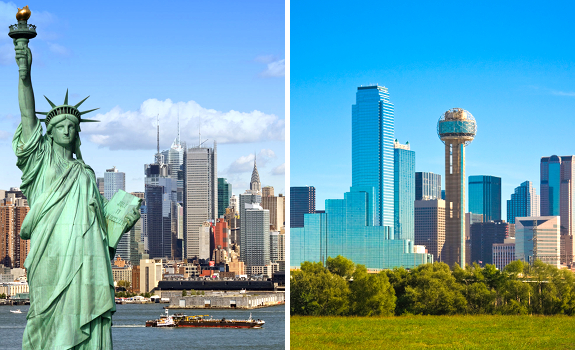
The challenge for syndicated radio services is to maintain enough localness (photos: Museumprijs, Texas AirSystems)
Expand your business model
And what’s the identity of ‘Y-100’ in a world where we’ll have a hybrid receiver or mobile app to listen to radio? When there’s more than FM, what will ‘X-97’ say to a listener?
“Right. If it doesn’t say anything to people, they’ll use the brands that they’re aware of and that they like.” Coleman thinks that it happens even more often when products are similar to each other. “Digital brands have to increase their commercials to be economically sustainable – or do ‘pay for play’, like Spotify, but that’s a different category. It’s going to be hard for listeners to tell the difference between a music-oriented Pandora and a music-oriented FM station. Then, they’re going to pick the one that plays better music.”
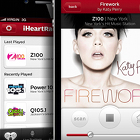 Keep your heritage identity
Keep your heritage identity
Is the future for American broadcast radio that ‘everything’ is going to be iHeart Radio, like iHeart New York, iHeart LA…? Where are we going?
“To a degree, yes; I think there will be iHeart Radio New York, Dallas, and so on. The challenge is to maintain a viable and local brand. Half of the radio brands in consumer’s heads might be digital or terrestrial, and nobody’s going to know or care. It’s about the brand and its connection.”





Add Your Comment